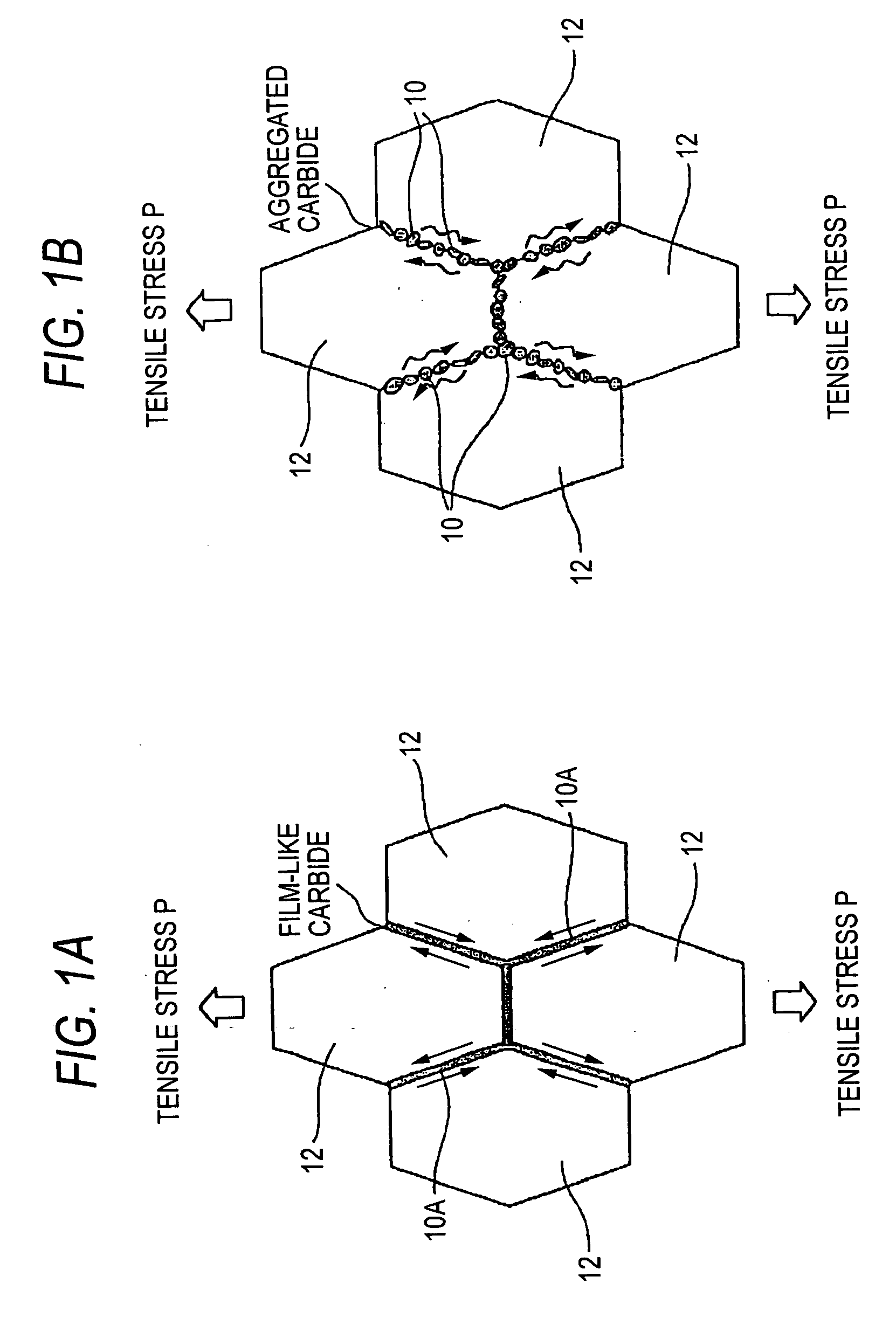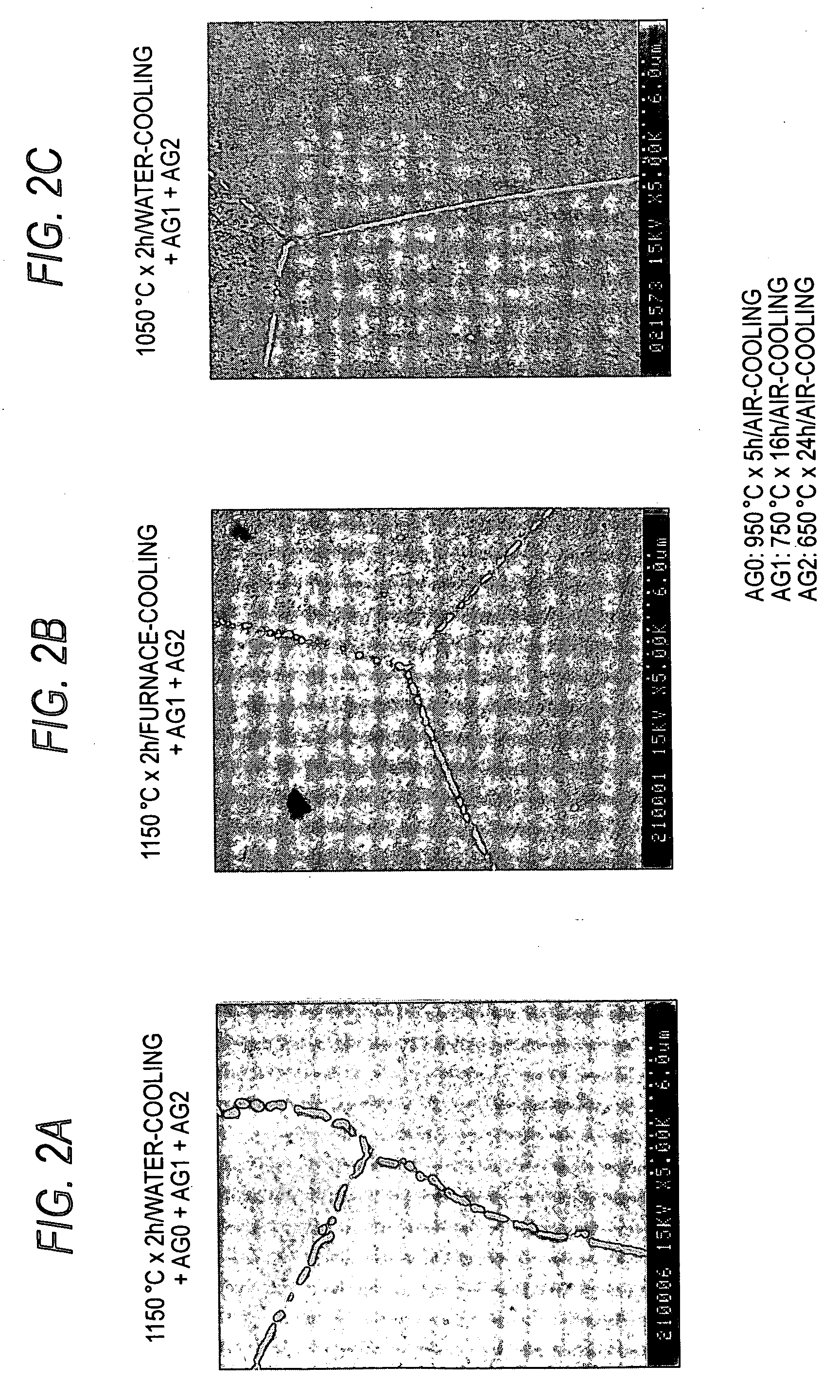Method for producing low thermal expansion Ni-base superalloy
a superalloy and low thermal expansion technology, applied in the field of low thermal expansion ni-base superalloy production, can solve the problems of steam leakage and limitation of the approach, and achieve the effect of low thermal expansion
- Summary
- Abstract
- Description
- Claims
- Application Information
AI Technical Summary
Benefits of technology
Problems solved by technology
Method used
Image
Examples
examples
[0061] The present invention is now illustrated in greater detail with reference to Examples and Comparative Examples, but it should be understood that the present invention is not to be construed as being limited thereto.
[0062] Then, Embodiments of the present invention will be described in details below.
[0063] The alloys of the compositions shown in Table 1 were vacuum melted, and cast into 50-kg ingots.
[0064] These were subjected to a homogenization treatment under the conditions of at 1200° C. and for 16 hours, and forged to round bars having 15-mm diameter.
[0065] The round bars were subjected to the heat treatments A to F of Table 2, and a creep rupture test at 700° C.×490 MPa was carried out to evaluate the rupture life. The results are shown in Table 2 together.
TABLE 1Chemical composition (weight %)Mo +½(W +Nb +No.CSiMnFeCoCrReMoWTaNbAlTiZrBNiRe)Ta / 2RemarksExample 10.030.120.16——18.2—18.5———0.520.960.030.003Bal.18.5—Example 20.020.150.240.21—14.5—20.4———0.501.380.020.00...
PUM
| Property | Measurement | Unit |
|---|---|---|
| temperature | aaaaa | aaaaa |
| temperature | aaaaa | aaaaa |
| temperature | aaaaa | aaaaa |
Abstract
Description
Claims
Application Information
 Login to View More
Login to View More - R&D
- Intellectual Property
- Life Sciences
- Materials
- Tech Scout
- Unparalleled Data Quality
- Higher Quality Content
- 60% Fewer Hallucinations
Browse by: Latest US Patents, China's latest patents, Technical Efficacy Thesaurus, Application Domain, Technology Topic, Popular Technical Reports.
© 2025 PatSnap. All rights reserved.Legal|Privacy policy|Modern Slavery Act Transparency Statement|Sitemap|About US| Contact US: help@patsnap.com


